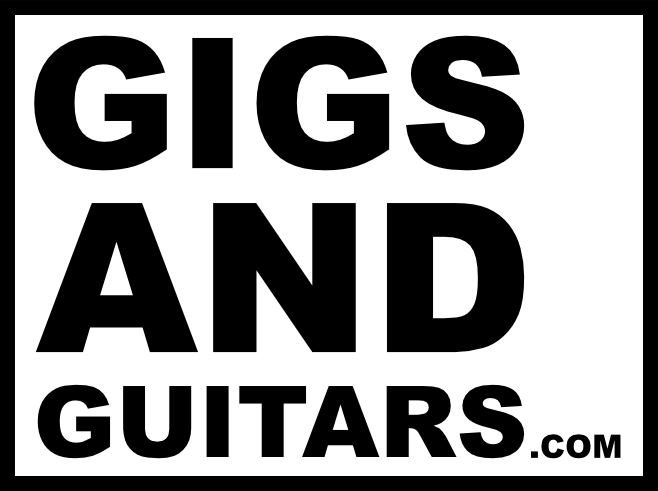Decoding Backing Tracks: When to Hit Play and When to Let Loose

Introduction
It was only a matter of time until we spoke about backing tracks! Or ‘tracks,’ as most people call them. There is a lot of talk, a lot of information, and also, a lot of opinions! Lots of people like them, lots of people hate them, yet loads of bands use them! There are many different ways to use backing tracks within a band’s context, most of which we will go over in this article, as well as discussing when you should use them and when you shouldn’t. We might even give you a few suggestions on how to use them and get set up with backing tracks! Are they good or bad? Can you use them, and when should you use them? Well, let’s go over all that in this article! Firstly, shall we go over why people hate them?
The Main Purpose of Backing Tracks
So, what is the main purpose of backing tracks? Well, most of the time when we refer to backing tracks, we’re referring to a sound being played through the PA that isn’t being performed live on stage! This could be anything from guitars, backing vocals, or just effects and noises! If it isn’t on stage and being played through a device, then I would consider that a backing track! However, having the option to play things through the PA that don’t need to be played can lead to some people pushing the limits on what should be done. Some bands have been known to go as far as miming along to their CD! People criticize pop music singers for miming? Well, there are a lot of bands doing just that with their vocals and instruments!
So, maybe this leads us to our next point. Let’s talk about why some people don’t like backing tracks.
Why don’t People like Backing Tracks
I don’t think people hate tracks; I think people hate the way they are sometimes used! People feel they are cheating or helping you seem better than you are! Which I guess is a little true, but not in the same sense that they mean! I’m not saying there aren’t people that don’t abuse backing tracks by putting everything on tracks and almost miming an entire set. However, when used right, they can be amazing and super useful for making a small show seem bigger. Basically, can you cheat with backing tracks? Yes! Is that what you should use them for? No!
So how should you use them? Well, why don’t we go over a few ways right now! A few ways in which we think it’s perfectly acceptable to use backing tracks!

When to use Back Tracks

Bigger Production for Smaller Bands
Backing tracks are also used to enhance production, filling in the gaps in your performance that you may not have the members or budget to address yet. What could this entail? Consider songs with elaborate orchestral arrangements—strings or brass. Ideally, you’d hire an orchestra, but smaller bands (and stages) often can’t afford this luxury.
Another reason to use backing tracks is to compensate for a missing band member. Suppose your bassist falls ill on the day of a gig. If you’ve recorded the set with bass tracks, you can use them. Is it perfect? Not quite, but it yields satisfactory results. A Day to Remember had to resort to this when their bassist left.
Rehearsals
Backing tracks are invaluable for filling in for absent band members during rehearsals. Similar to the scenario above, if a member can’t make it to rehearsal, a multitrack recording can stand in for them. This is particularly useful for drums, bass, and guitars, as these instruments are crucial during rehearsals. If the drummer can’t make it for some reason, just play the drum tracks and proceed with practice. It won’t be the same, but at least everyone else can still rehearse. This works even better with an in-ear monitoring system, which requires minimal setup, and mixing tracks directly into your in-ears is straightforward.
Adding Effects and Ambience
Many bands, especially those in metal and heavier genres, incorporate drops using 808s for a massive impact. Executing this live can be challenging, so running them through tracks removes the need to trigger them live. Most people would agree that this isn’t cheating, as these elements aren’t typically meant to be played live. This approach can also be applied to gang vocals or heavily processed vocals.
The Downside of Backing Tracks
Unless you have a sophisticated rig and playback setup, there isn’t much freedom during performances. Want to extend the guitar solo or change the setlist? This adds extra steps and hurdles. With backing tracks, your set becomes rehearsed and precise, which isn’t necessarily bad but can feel linear.
Additionally, backing tracks only truly work with in-ear monitors (IEMs) because everything is locked to a grid, requiring synchronization with the backing track’s metronome. If you go offbeat too much, the track won’t align, resulting in a disjointed performance. Therefore, you need a way to run tracks, clicks, and control everything. However, this adds to the setup cost. If you’re on a budget, consider having only the drummer use IEMs with a click, with everyone else syncing to them.
However, the biggest downside is the risk of system failure. Worried if your pedals will work? Imagine running the entire show from a laptop. The more you sync with backing tracks, the higher the chances of error. It’s essential to know your rig inside out, practicing for potential failures to quickly troubleshoot.
Conclusion
I hope this article has helped you decide whether to use backing tracks or simply understand them better—what they can be used for and how they can enhance your production. Just remember not to overuse them. Perhaps we’ll follow up with a walkthrough on setting up a quick playback rig. If you’re interested, let us know on our Instagram!
If you want to support the site then please give us a follow on Instagram and subscribe to our YouTube.
Check out our other Articles here
